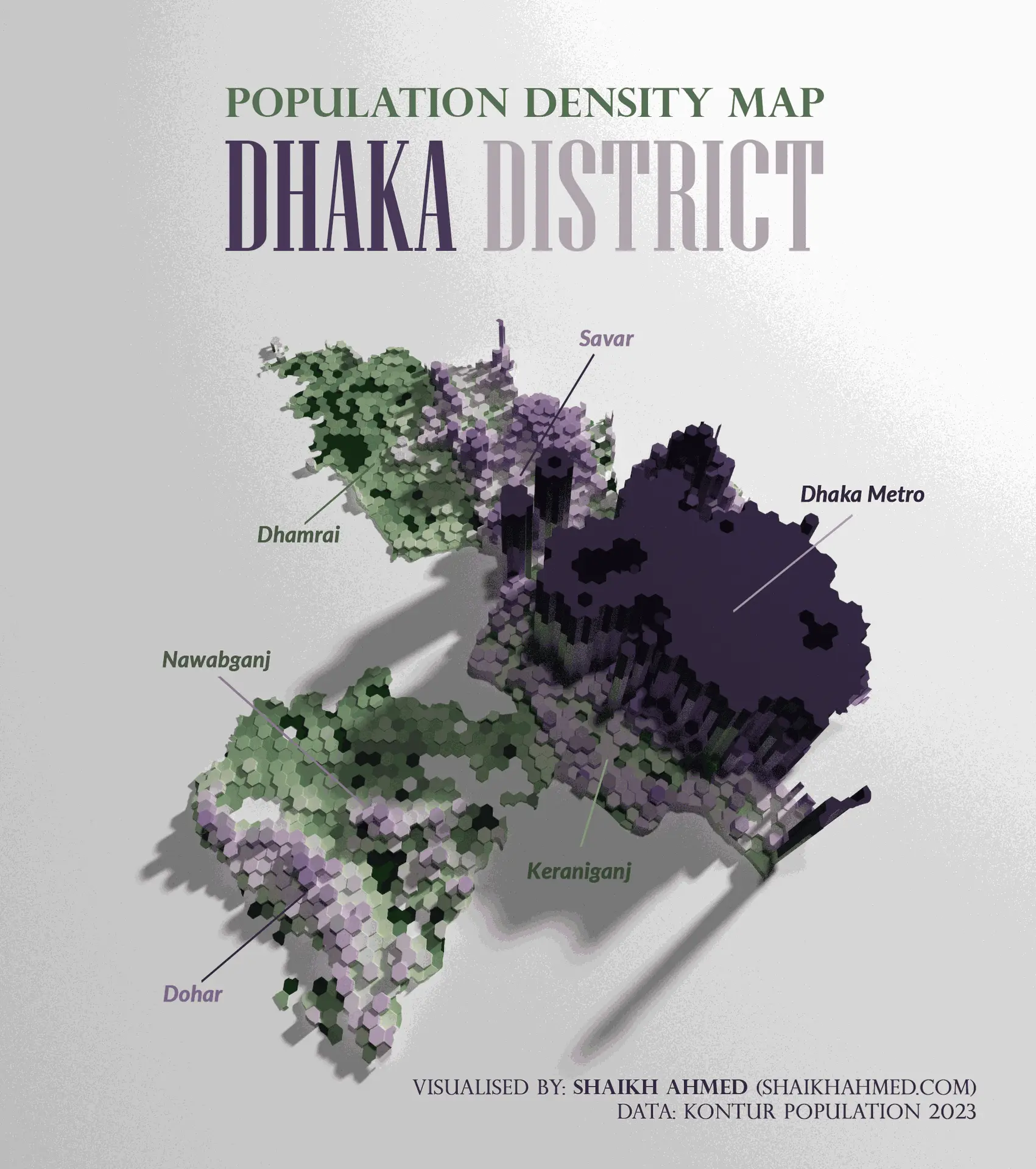Dhaka is often described as the beating heart of Bangladesh. But it is the Dhaka Metropolitan Area (DMA) that bears the weight of the nation’s population and infrastructure demand. A closer look at the population density map of Dhaka District reveals a stark imbalance: most people are concentrated in the metropolitan core, leaving surrounding upazilas like Dohar, Nawabganj, and Dhamrai significantly less populated.

Data Set: Kontur Population: Global Population Density for 400m H3 Hexagons | Humanitarian Dataset | HDX
This pattern reflects a broader national challenge. Public services, job opportunities, and higher education institutions remain tightly clustered in the capital, reinforcing internal migration and putting immense pressure on urban infrastructure. In contrast, peripheral areas have struggled to attract equal investment and attention.
There are signs of change. Improved road networks and transport systems have begun to connect Dhaka with nearby areas such as Savar and Dhamrai. These regions now offer potential as alternative growth hubs. Savar has seen noticeable infrastructure improvements and industrial growth. Meanwhile, Keraniganj, despite its proximity to central Dhaka, lags, highlighting the uneven pace of decentralization.
A more balanced development model is essential. Decentralising key services, promoting regional economic zones and ensuring better urban & rural connectivity can reduce Dhaka’s overburden while unlocking potential in surrounding regions.
This map of Dhaka District is not just a visual snapshot of population concentration it’s a prompt to rethink how and where development happens in Bangladesh.